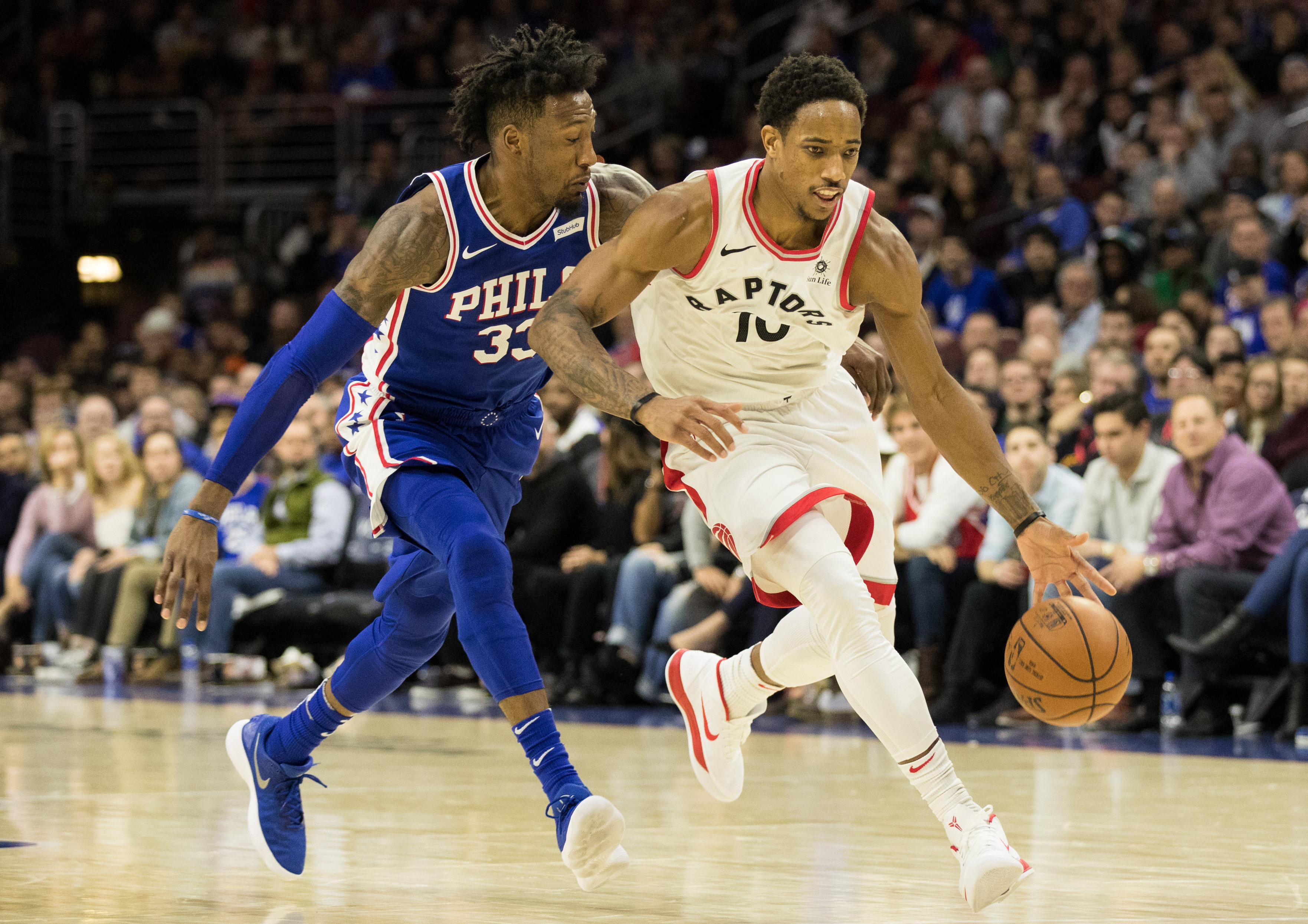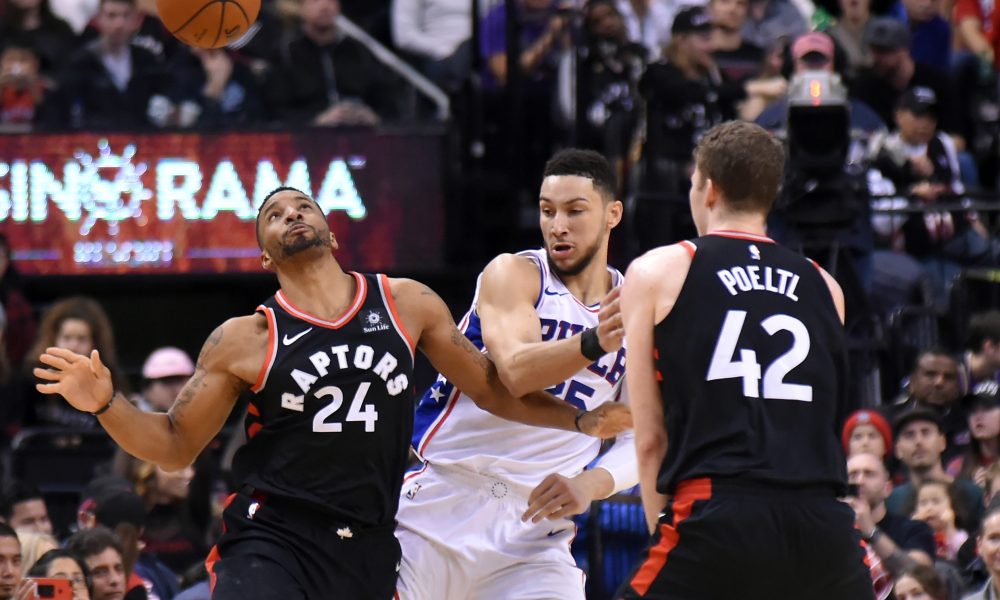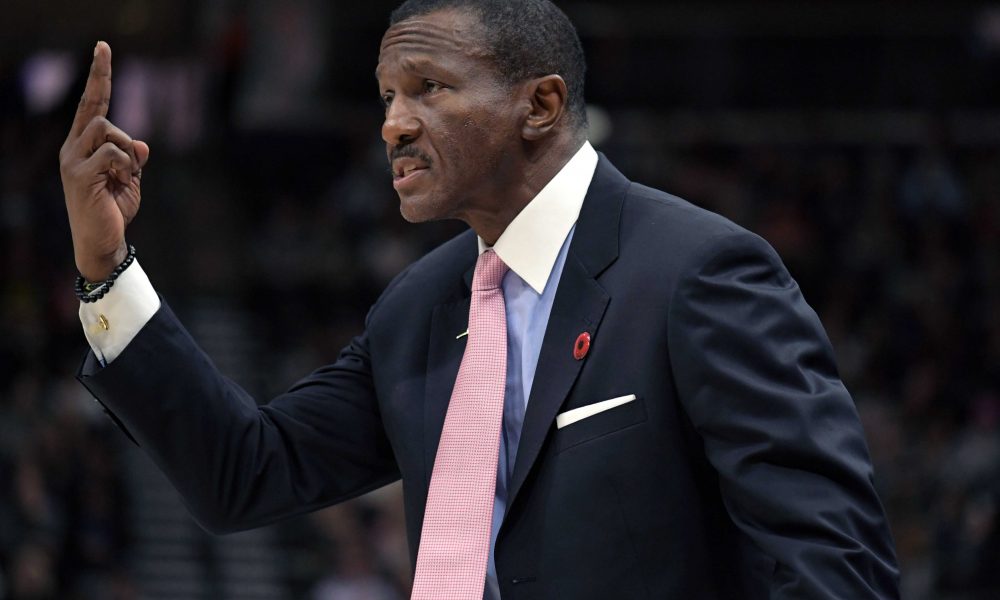Raptors Playbook: Pistol
Over at the Raptors Playbook YouTube channel (@RaptorsPlaybook on Twitter), I am breaking down the X’s & O’s of the Toronto Raptors. This week, we’ll focus on their Pistol Series – an early offense action with several actions stemming from the strong side wing. Watch the video embedded below alongside the summary written, and remember to follow and subscribe to never miss out on a video.
The first option out of this action is a step-up ball screen between the ball handler (for the sake of explanation, the ball handler and “1” or “point guard” are synonymous, even though any ball handler on the team can fulfill this role) and the guard that filled the strong side corner in transition. The ball handler will look to get a step on their man or prey on the indecisiveness of a switch between two defensive players along the sideline as they make their way to the rim. Examples of this can be seen starting at 0:01.
Starting at 0:26, the Flare screen option of this play is shown after the ball handler dribbling down the wing is unable to find a lane to the rim off of the step-up ball screen. While 1 waits along the wing, the 2 will come off a Flare screen set by the trailing big man. If the 2 gets enough separation by using this screen, the 1 will throw an over-the-top pass. Upon receiving the pass, the 2-guard can shoot or wait for a ball screen of their own.
While the Flare screen option can produce open three-point attempts, it is often well-defended as this action is common throughout the entire league. Starting at 0:50, examples of the Raptors opting against passing to the 2 after the Flare screen can be seen. The point guard will wait for the trailing big to finish setting the Flare screen while the 2 clears out before utilizing their second ball screen of the possession. As a result of being involved in several actions in quick succession, the defense is often out of position to properly execute their side-to-middle pick and roll coverage (ICE, Hedge and Recover, etc..).
While the previous three options discussed stem from the point guard holding on to the ball as they dribble to the wing, the final option comes as a result of the 1 passing to the 2 (or engaging in a DHO) as they exchange positions along the sideline. Starting at 1:14, examples of the Raptors passing to the 2 along the wing can be seen. Once that occurs, they will quickly engage in a side-to-middle ball screen with the trailing big. It is difficult for the defense to ICE this action as the 2 has built momentum as they sprint out from the corner. A few different options naturally present themself once the ball screen occurs.
The first, starting at 1:19, is capitalizing on the typical 2-on-1 that occurs from a side-to-middle ball screen that forces the screen defender to backpedal as the on-ball defender attempts to recover in front of their man.
The second, starting at 1:34, involves passing to the open player along the strong side of the floor. This can range from the 1 lifting along the sideline and executing their role as the “shake man” to force a difficult recovery for the tagging defender, or letting the trailing big man act as a decision maker in DHO scenarios.
The third set of options, which can be seen starting at 1:55, come from passing to the weak side of the floor after engaging in a side-to-middle ball screen. Just as any other ball screen, an over-eager help defender can be leveraged into an open shot. However, the most interesting weak side action is called “Blind Pig”, which is a counter to aggressive ball-denials. The weak side big man lifts to the perimeter and presents themselves as a target for the pass after the ball screen, while the weak side perimeter player cuts behind them and receives a drop pass.




